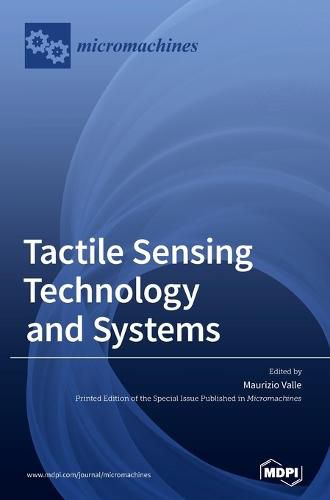Readings Newsletter
Become a Readings Member to make your shopping experience even easier.
Sign in or sign up for free!
You’re not far away from qualifying for FREE standard shipping within Australia
You’ve qualified for FREE standard shipping within Australia
The cart is loading…






This title is printed to order. This book may have been self-published. If so, we cannot guarantee the quality of the content. In the main most books will have gone through the editing process however some may not. We therefore suggest that you be aware of this before ordering this book. If in doubt check either the author or publisher’s details as we are unable to accept any returns unless they are faulty. Please contact us if you have any questions.
Tactile sensors are basically distributed sensors which translate mechanical and physical variables and pain stimuli into electrical variables. Contact information is further processed and conveyed to a supervising system. Tactile arrays ought to be mechanically flexible (i.e., conformable to the object it is applied to) and stretchable and tactile information decoding must be implemented in real time. The development of artificial tactile sensing is a big challenge as it involves numerous research areas. Application domains include humanoid and industrial robotics, prosthetics, biomedical instrumentation, health care, cyber physical systems, virtual reality, arts, to name but a few. Recent and relevant achievements in materials and transducers have not yet successfully boosted system developments due to the challenging gaps which still need to be filled at many levels, e.g. data decoding and processing, miniaturization, mechanical compliance, robustness, among others. Tactile sensing has developed rapidly over the past three decades, but has yet to achieve high impact breakthroughs in application domains. In this Special Issue, we focus on both insights and advancements in tactile sensing with the goal of bridging different research areas, e.g., material science, electronics, robotics, neuroscience, mechanics, sensors, MEMS/NEMS, addictive and 3D manufacturing, bio and neuro-engineering.
$9.00 standard shipping within Australia
FREE standard shipping within Australia for orders over $100.00
Express & International shipping calculated at checkout
This title is printed to order. This book may have been self-published. If so, we cannot guarantee the quality of the content. In the main most books will have gone through the editing process however some may not. We therefore suggest that you be aware of this before ordering this book. If in doubt check either the author or publisher’s details as we are unable to accept any returns unless they are faulty. Please contact us if you have any questions.
Tactile sensors are basically distributed sensors which translate mechanical and physical variables and pain stimuli into electrical variables. Contact information is further processed and conveyed to a supervising system. Tactile arrays ought to be mechanically flexible (i.e., conformable to the object it is applied to) and stretchable and tactile information decoding must be implemented in real time. The development of artificial tactile sensing is a big challenge as it involves numerous research areas. Application domains include humanoid and industrial robotics, prosthetics, biomedical instrumentation, health care, cyber physical systems, virtual reality, arts, to name but a few. Recent and relevant achievements in materials and transducers have not yet successfully boosted system developments due to the challenging gaps which still need to be filled at many levels, e.g. data decoding and processing, miniaturization, mechanical compliance, robustness, among others. Tactile sensing has developed rapidly over the past three decades, but has yet to achieve high impact breakthroughs in application domains. In this Special Issue, we focus on both insights and advancements in tactile sensing with the goal of bridging different research areas, e.g., material science, electronics, robotics, neuroscience, mechanics, sensors, MEMS/NEMS, addictive and 3D manufacturing, bio and neuro-engineering.